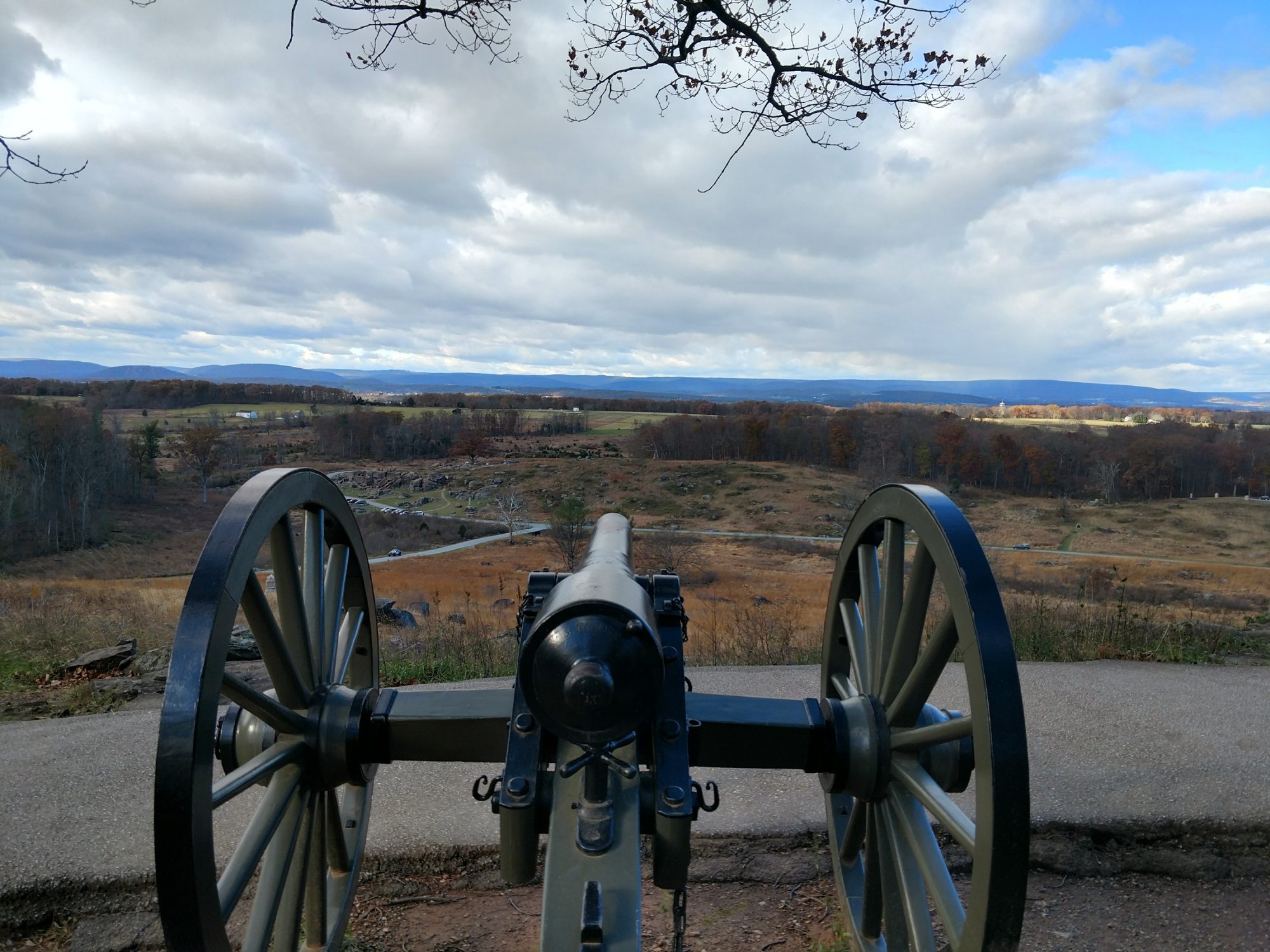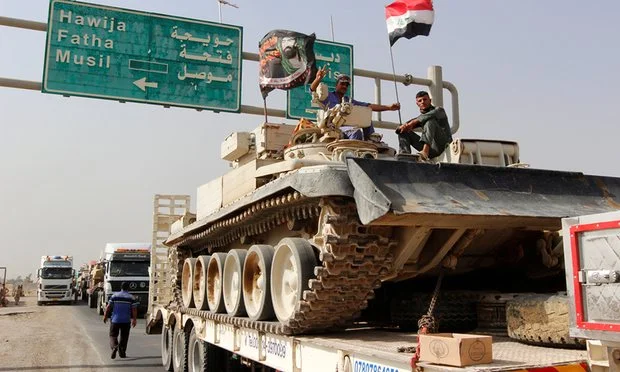“I approve of all methods of attacking provided they are directed at the point where the enemy’s army is weakest and where the terrain favors them the least.”
– Frederick the Great
The Battle for Mosul is now just about one month old, as Iraqi Security Forces – bolstered by Coalition air and artillery support – move ever deeper into the urban landscape around the city. As they do so, they are encountering whole neighborhoods sown with improvised explosive devices and landmines. For all intents and purposes, they are running into what would be termed by doctrine as belts of obstacles. These belts need to be breached to allow for friendly forces to push through and actually get at the Daesh forces trying to hold key terrain. And the best way to make a big ol’ lane through an obstacle is by using combined arms breaching.
Ask any engineer officer about combined arms breaching and their eyes will light up with an inner intensity that is slightly alarming. Ask an armor officer about combined arms breaching and they will immediately grumble about “slow engineers” and start talking rapidly about how to bypass an obstacle (only kidding, they love this stuff too). An aviator will just shrug and say that the former individuals are both inferior beings and ask you where you want things to be shot. The truth of this complex exercise lies somewhere in the middle of these two reactions: it is at once the single most dangerous point of the battlefield while also being the most decisive. To breach an enemy’s obstacle system is to bring them within your own grasp, where you can now close with them and destroy their forces. But in doing so, you expose your own forces to grave vulnerability. As with all things in the military, we mitigate that risk with overwhelming firepower focused on one small area – and by proliferating reflective belts.
The breach – that is, the mechanical or explosive operation of creating a hole in the enemy’s defensive positions – is a multi-phased operation that requires repeated rehearsals from all participants and exhaustive preparation in order to be successful. At the core of it are the engineers whose job it is to reduce the obstacle – be it a minefield, tank ditch, wire obstacle, berm, etc. – and create a lane for friendly forces to rush through. The breach fundamentals are burned into the brainpan of every engineer: suppress, obscure, secure, reduce, and assault (SOSRA).
First off, we should discuss how to conduct a combined arms breach to provide a baseline of knowledge. But rather than paint this like a standard Cold War-era combined arms breach, let’s do a little bit of an abrupt left turn to explain how not to conduct a combined arms breach: Saruman’s forces at the Battle of the Hornburg in J.R.R. Tolkien’s The Two Towers.
First of all, the attacking force should be actually a mix of combined arms: armor, infantry, artillery, and aviation assets. Saruman’s task organization consisted only of his own orcs – many of whom were the Uruk-Hai, orcs who were almost “man-high” – and men from the Dunland region. However, they did have the principle of mass on their side, as they could muster more than 10,000 fighters as compared to the Rohirrim’s merely 2,000 or so defenders. This gave them a 5:1 ratio against their enemy. However, the Rhohirrim were firmly ensconced inside the fortress of the Hornburg in Helm’s Deep – a position with successive lines of defenses that required multiple breaches to reach the final defensive position.
Let’s break this down by the breaching fundamentals. Suppression is the first, which was accomplished by mass archer fire from the orcs and men who attempted to keep the defenders’ heads down to allow for the breaching force to reach the point of breach. This – combined with the sheer mass of their forces – allowed them to breach Helm’s Dike, the first line of defense. They then moved on the main wall of the fortress, accessible only by a main gate. Here, their lack of obscuration left them vulnerable to massed archery fire from the walls. This led to their first attempt to breach the gate with a battering ram to end in failure after the defenders made a sortie and destroyed the breaching force. Saruman’s forces had also failed to secure the point of breach, allowing this to happen.
They then attempted to create multiple footpaths through the obstacle using ladders over the walls. This was met with failure, as the defenders were able to mass their forces to defeat the localized attacks. Analyzing the terrain, the attackers identified a weak spot in the defenses: a culvert under the wall. A ground force attempted to infiltrate this weak point, but were repelled by a counterattack. The breach was repaired. However, learning from their mistakes, the enemy secured this site again, used archery fire to suppress the enemy, and created a massive breach in the wall using “blasting-fire,” an invention of Saruman (who apparently had some sort of DARPA thing going on). This breach was finally successful and the assault forces poured in.

The defenders retreated to their last covered and concealed battle positions as Saruman’s forces flooded into the walls. However, using the element of surprise and audacity, Theoden – the leader of the Rohirrim – identified that the enemy was off balance (and that he had no options left), led a mounted counterattack out of the fortress, and drove a massive wedge into the dismounted infantry. Simultaneously, the friendly wizard Gandalf arrived on the battlefield with reinforcements in the enemy’s rear, now presenting them with multiple dilemmas. In confusion, Saruman’s army collapsed and routed.
Saruman’s inability to incorporate mass, firepower, and synchronization – and his refusal to adhere to SOSRA – doomed his force from the outset and highlights the difficulty in breaching multiple obstacle belts.
Back to the present day. Ever since the seizure of Ramadi in December of 2015, the Iraqi Security Forces (ISF) have been working on their combined arms breaching abilities. Actions at Ramadi showed that the ISF were developing advanced breaching capabilities, as they conducted a wet-gap crossing at the Tharthar Canal and utilized Mine Clearing Line Charges to reduce IED minefields in the approaches to the city. This was followed up by armored bulldozers to proof the lanes. As the Operation Inherent Resolve spokesman, Col. Steve Warren, said in a briefing that month, “this is advanced work. This is using the principles of suppress, secure, obscure, reduce obstacles.”

The following month, the ISF’s 72nd Infantry Brigade was already receiving additional combined arms breaching training from US and Coalition trainers in preparation for Mosul. This ten-week course incorporated lessons-learned from Ramadi, where the ISF encountered multiple obstacle belts made up of IED minefields. In one sense, the use of IEDs to create minefields creates an advantage to the Coalition-backed ISF, since western conventional militaries have trained on combined arms breaching as a basic drill for decades. That the ISF has been able to conduct combined arms breaches – even at the most rudimentary levels – demonstrates an impressive development in their capabilities.
In October, an article from the Military Times announced that the ISF had been equipped with more than 60 up-armored bulldozers and six mobile bridging assets by the US. These assets were used in the final combined arms rehearsals before the assault on Mosul began later that month.

Like so many others, I watched on Twitter as the assault for Mosul began, watching the incredible amount of firepower being directed on Daesh forward positions. I also noted that both the ISF and Peshmerga were bringing in bulldozers and other earth-moving equipment on trailers to stage them before the assault. Also seen moving into position were MRAPs with attached mine-rollers. Ostensibly, the ISF could utilize trailer-mounted Mine Clearing Line Charges to clear a lane through the minefield, use armored bulldozers to proof the lane, and follow it up with a mounted column led by a vehicle with a mine roller.

The ISF and Peshmerga are now inside urban centers surrounding the city of Mosul proper, implying that they have breached multiple Daesh obstacle belts. This demonstrates an increasingly impressive level of tactical sophistication in the ever-developing force. This does not mean that the worst is over, however; urban warfare is another incredibly complex operation that sucks up resources and manpower very quickly. Time will tell if the ISF and the Peshmerga have the operational stamina to sustain a prolonged offensive action. Their ability to adapt to changing enemy tactics and techniques bodes well for the future. Combined arms breaching is one of the most challenging operations on the battlefield – and if the ISF can master that, they might just regain their country.
Enjoy what you just read? Please share on social media or email utilizing the buttons below.
About the Author: Angry Staff Officer is an Army engineer officer who is adrift in a sea of doctrine and staff operations and uses writing as a means to retain his sanity. He also collaborates on a podcast with Adin Dobkin entitled War Stories, which examines key moments in the history of warfare.




One Reply to “”
Comments are closed.